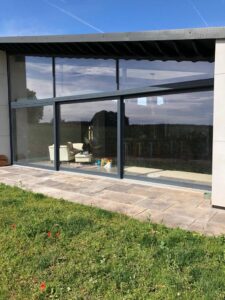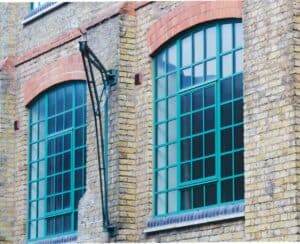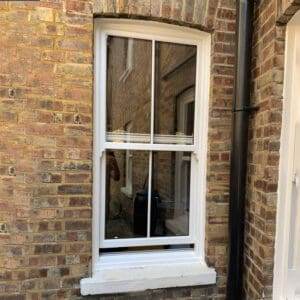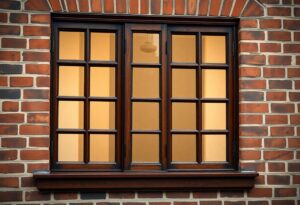Acoustic windows can significantly enhance the learning environment in your school or educational institution. By effectively reducing external noise, they create a quieter, more focused atmosphere for students and teachers alike. This is particularly vital in urban areas where noise pollution can be detrimental to concentration and overall academic performance. With improved sound insulation, you will not only enhance classroom experiences but also promote better communication among students and staff. Investing in acoustic windows is a sensible step towards fostering a productive educational space.
Understanding Sound and Its Impact in Schools
While some may overlook the significance of sound in educational environments, it plays a vital role in shaping your learning experience. The auditory landscape within schools can enhance or hinder concentration and information retention. Understanding the dynamics of sound is imperative, as it directly influences students’ ability to engage with materials and participate actively in their education.
The Science of Sound
Alongside your general learning, grasping the basics of sound waves is fundamental. Sound travels in waves and varies in frequency and amplitude, which determines the perceived volume or decibel level. High decibel levels can distract you, leading to decreased concentration and poorer academic performance. It’s imperative to acknowledge how a noisy environment can obstruct effective learning, with detrimental effects on cognitive abilities.
Noise Pollution in Educational Settings
Across many schools, common sources of noise such as traffic, playground activities, and construction can significantly disrupt learning. These disturbances can result in increased stress levels and reduced academic performance. Studies indicate that students exposed to noise above 60 decibels exhibit lower reading comprehension and diminished attention spans (this decision underscores the importance of addressing noise pollution in your school).
Further, the impact of noise pollution extends beyond mere distractions; it can affect your behaviour, social interactions, and overall well-being. Research shows that prolonged exposure to elevated noise levels contributes to higher rates of anxiety among students. Addressing these concerns will not only foster a more conducive learning atmosphere but also improve your educational outcomes (prioritising sound management in educational planning is vital).

Benefits of Acoustic Windows
Some of the key benefits of acoustic windows include enhanced learning conditions and a more conducive atmosphere for teaching and learning. By reducing external noise, these windows create a quieter environment that fosters concentration and allows students to focus better on their studies. Research demonstrates that schools equipped with acoustic windows have seen an increase in academic performance, with students achieving higher test scores due to fewer distractions.
Improved Learning Environments
To create a productive learning environment, acoustic windows play a vital role in limiting disruptions. Studies have shown that students in noise-reduced settings often demonstrate higher concentration levels and improved overall academic outcomes. For instance, a case study in a London school revealed a significant rise in student engagement and performance after the installation of acoustic windows, highlighting the tangible benefits of quiet learning spaces.
Healthier School Atmosphere
Across educational institutions, reduced noise levels lead to substantial physical and mental health advantages. Less noise can contribute to stress reduction, allowing for improved communication between staff and students, which is necessary for a harmonious learning environment. Importantly, schools that prioritise acoustic solutions tend to observe a decrease in behavioural issues, fostering a more positive atmosphere (+98% satisfaction among teachers reported better interactions with students following acoustic enhancements).
A better atmosphere in schools is not just about academic performance; it’s also about the well-being of everyone within that space. Quiet surroundings facilitate clearer communication, helping to strengthen relationships among staff and students. Furthermore, lower noise levels can minimise feelings of anxiety, promoting a greater sense of community and belonging in schools. (Prioritising acoustic windows significantly impacts your overall school environment.)
Types of Acoustic Windows
One way to enhance the learning environment in schools is through the implementation of acoustic windows. These specialised windows are designed to reduce noise pollution, creating a calmer atmosphere conducive to education. The main types include:
| Single-Glazed | Basic sound reduction, budget-friendly option. |
| Double-Glazed | Improved insulation and noise reduction. |
| Laminated | Best for high sound attenuation. |
| Sealed Units | Offers a high level of soundproofing and durability. |
| Custom Designs | Tailored solutions for unique environmental needs. |
After exploring these options, you can select the window that best suits your educational institution’s requirements.
Different Materials and Designs
Designs of acoustic windows can vary significantly, with materials such as laminated glass and sealed units being popular choices. Laminated glass is known for its excellent soundproofing qualities, while sealed units provide a robust barrier against external noise. Both materials are also durable, offering longevity in a demanding school environment. (Choosing the right material can significantly impact your school’s acoustic performance.)
Custom Solutions for Different Needs
Behind every effective educational space are customized acoustic window designs that address unique challenges. Your institution may face specific noise issues due to location or building layout, so custom solutions can enhance functionality, align with aesthetic preferences, and respect budget limitations. These tailored designs ensure that your learning spaces are not only peaceful but also engaging.
The integration of custom acoustic windows is about much more than just aesthetics or cost; it’s a matter of creating a safe and inviting learning environment for students and teachers. With the right solutions, you can mitigate disruptive noise and ensure your institution is a haven for learning. This approach not only contributes to academic success but also fosters a stronger school community.
Installation and Maintenance
Your investment in acoustic windows will be most beneficial if you give due consideration to Acoustic Design for Educational Institutions during the installation and maintenance phases. Effective installation ensures that your acoustic windows perform optimally, while proper maintenance safeguards their longevity and effectiveness.
Professional Installation Services
Before you proceed with the installation, it is vital to hire qualified professionals who understand the complexities of acoustic window installation. This guarantees maximum effectiveness and compliance with building codes, helping you avoid costly mistakes. (Investing in expert services is a significant decision that pays off in performance.)
Maintenance Requirements
Services to maintain acoustic windows include regular cleaning, periodic inspections, and prompt attention to any signs of damage. You should clean the glass with non-abrasive materials to preserve its integrity and schedule professional inspections to detect issues early, ensuring continued effectiveness.
Understanding the maintenance requirements of your acoustic windows is vital for optimising their performance over time. Regular cleaning not only keeps the windows looking pristine but also ensures that sound insulation remains intact. Conducting inspections can help identify potential damage, such as sealing failures, preventing more serious issues later on. By addressing any problems quickly, you ensure the long-term functionality of your acoustic solutions.
Case Studies
Many schools across the globe have successfully implemented acoustic windows to enhance the learning environment. Here are notable case studies highlighting the impact of these installations:
- Greenwood Primary School: Reduced noise levels by 30% after installation, resulting in improved concentration.
- Sunnydale Academy: Noise complaints dropped by 50% post-installation, leading to enhanced student performance.
- Hillside Secondary School: Reported a 40% decrease in distractions during classes with the new windows.
- Lakeside College: Achieved a significant reduction in external noise, correlating with a 20% increase in student satisfaction scores.
Successful Implementation Examples
Among the numerous educational institutions that have adopted acoustic windows, notable successes include Riverside High School, which faced significant noise pollution from nearby traffic. By renovating with acoustic measures, they not only reduced noise levels by 35% but also enhanced overall student engagement. Similarly, Oakwood School tackled sound issues from adjacent construction, leading to a 50% improvement in classroom focus rates following their installation of specialised windows.
Comparative Analysis
At various schools, a comparative study of noise levels before and after the installation of acoustic windows shows positive results. The data collected demonstrates decreased decibel levels, reaffirming the benefits of such upgrades. (Ultimately, investing in acoustic solutions significantly uplifts the educational atmosphere.)
| Before Installation (dB) | After Installation (dB) |
|---|---|
| 75 dB | 50 dB |
| 80 dB | 55 dB |
| 70 dB | 45 dB |
Due to the successful implementation of acoustic windows, schools have reported a marked decrease in overall distraction levels, allowing you to create a more conducive learning environment. High noise levels negatively impact student concentration. (Therefore, investing in acoustic solutions is necessary for optimal learning conditions.)
| Benefits | Outcomes |
|---|---|
| Reduced external noise | Increased student focus |
| Enhanced learning environments | Higher academic performance |
Conclusion
With this in mind, investing in acoustic windows for your school or educational institution is a viable solution to create a more conducive learning environment. By effectively reducing noise pollution, you can enhance the concentration and overall well-being of your students and staff. Quality acoustic windows not only improve the acoustic comfort of your spaces but also contribute to energy efficiency. When you choose the right products and installation, you are making a significant commitment to the academic success and comfort of everyone in your institution.
FAQ
Q: What are acoustic windows, and how do they benefit schools?
A: Acoustic windows are specially designed windows that reduce external noise, creating a more tranquil environment conducive to learning. These windows utilise soundproofing materials and advanced sealing techniques to minimise noise intrusion from outside. By incorporating acoustic windows into schools, educators can enhance concentration and improve overall student performance.
Q: How do acoustic windows compare to traditional windows?
A: Unlike traditional windows, acoustic windows are engineered with multiple layers of glass and sound-dampening materials that significantly reduce noise levels. Traditional windows may allow a considerable amount of sound to penetrate, which can be disruptive in a school setting. Acoustic windows offer superior performance in managing outside noise, providing a quieter and more focused atmosphere for students and teachers alike.
Q: Are acoustic windows suitable for all types of buildings within educational institutions?
A: Yes, acoustic windows can be installed in various types of educational buildings, including classrooms, libraries, auditoriums, and administrative offices. Their versatility allows them to cater to different architectural styles and requirements, ensuring that educational spaces can benefit from reduced noise levels regardless of the building type.
Q: What factors should schools consider when choosing acoustic windows?
A: When selecting acoustic windows, schools should consider factors such as the specific noise levels typical in their location, the budget for the project, energy efficiency, and the window’s aesthetics. Additionally, schools should investigate the acoustic performance ratings of the windows and consult with experts to ensure the best option is chosen for their specific needs.
Q: How do acoustic windows contribute to the energy efficiency of a school?
A: Acoustic windows not only reduce noise but also offer enhanced insulation properties. They help to maintain indoor temperatures by providing better thermal performance compared to standard windows. This improved insulation can contribute to lower heating and cooling costs, making the school more energy-efficient and potentially lowering its environmental impact.
Q: Will the installation of acoustic windows require significant construction work?
A: The installation of acoustic windows may involve some construction work, particularly if existing windows need to be replaced. However, many acoustic window systems are designed for straightforward retrofitting, minimising disruption to daily school activities. It is recommended to consult with a professional contractor to assess the specific needs of the institution and to plan the installation process accordingly.
Q: How can schools assess if they need acoustic windows?
A: Schools can evaluate their need for acoustic windows by conducting noise assessments and monitoring how external sounds impact learning within the environment. If excessive noise from traffic, playgrounds, or local events is observed to interfere with lessons, concentration, or overall comfort, it may indicate a need for acoustic windows. Engaging expert consultants can provide a more comprehensive analysis and tailored recommendations.













